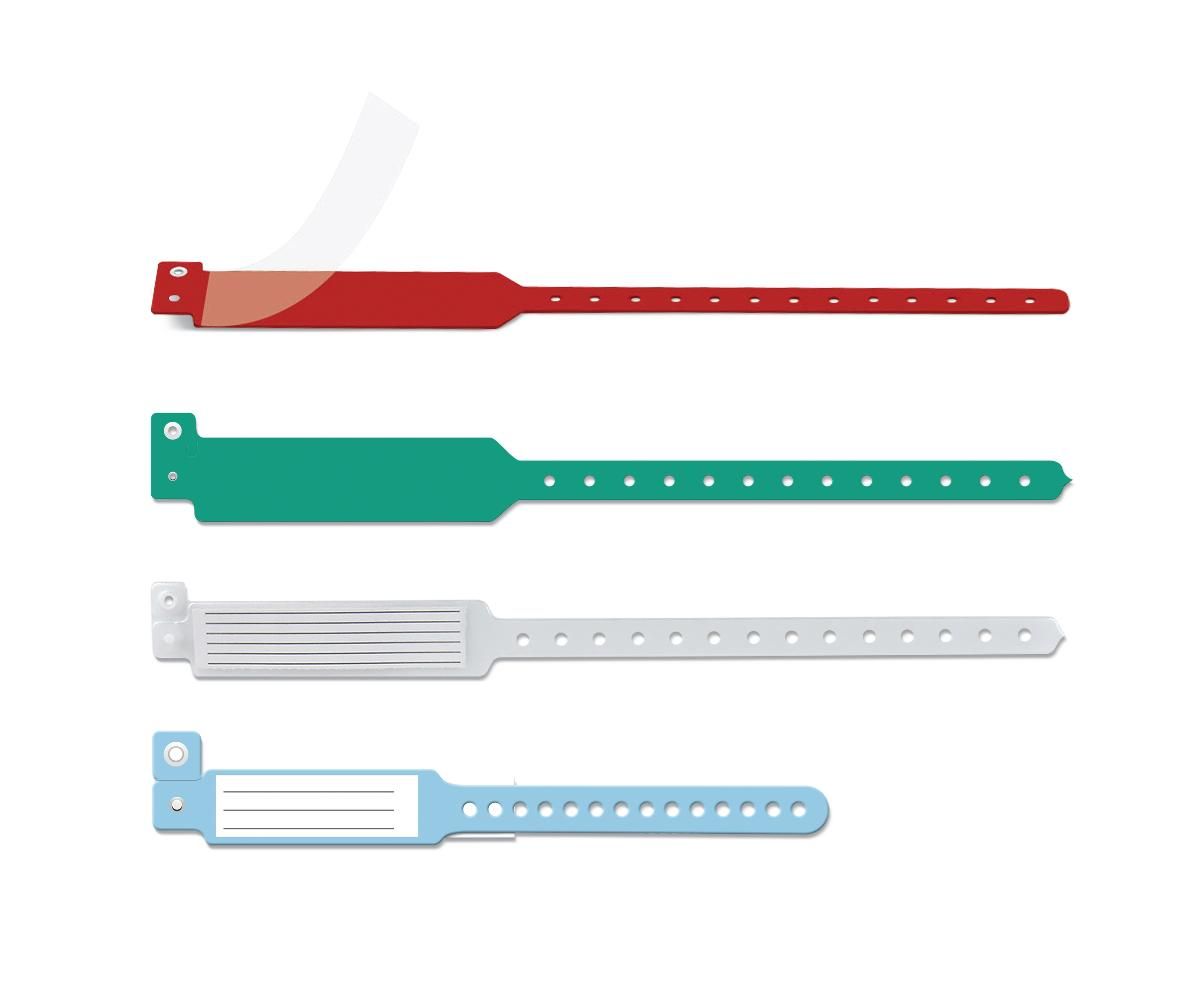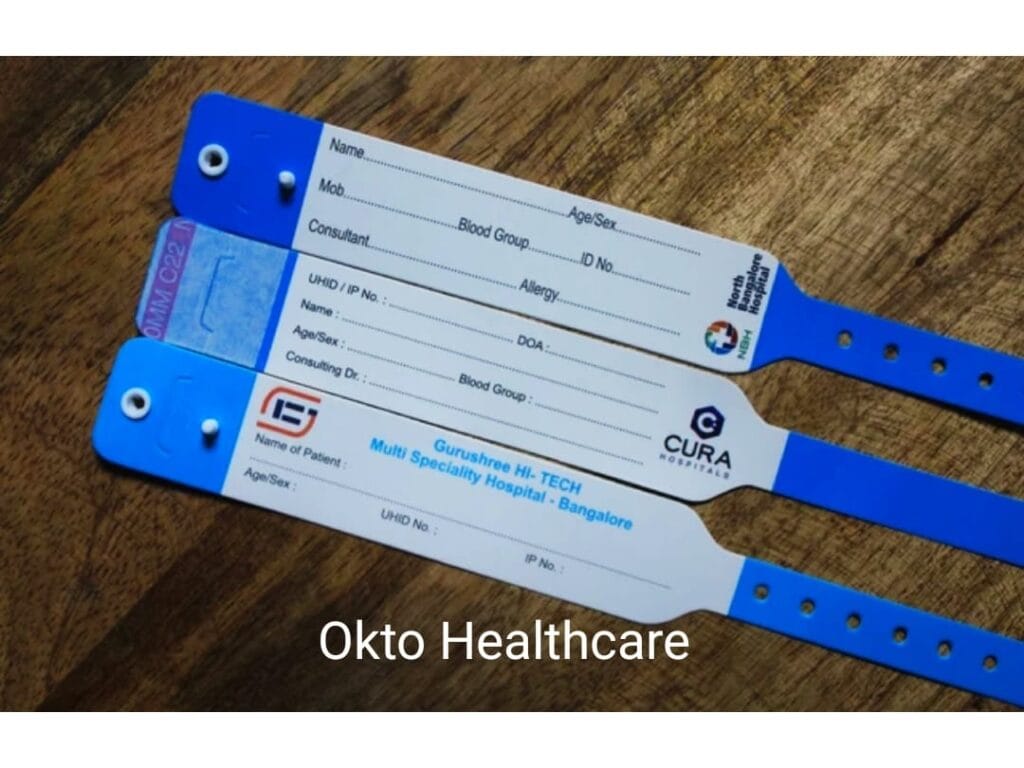Just How Patient Identification Band Improves Patient Safety in Clinical Settings
Just How Patient Identification Band Improves Patient Safety in Clinical Settings
Blog Article
Enhancing Client Care With Reliable Recognition Bands
The execution of efficient recognition bands is a crucial aspect in boosting patient care within healthcare setups. These bands not only serve to alleviate the dangers connected with client misidentification but likewise simplify communication among medical employees, therefore promoting a more secure setting. Various kinds of identification bands satisfy particular demands, from long lasting wristbands for grownups to specialized bands for babies and crucial situations. As the landscape of patient identification develops, one have to think about the effects of these systems on total healthcare shipment and person results. What advancements wait for in this crucial area?
Significance of Patient Recognition
Guaranteeing accurate individual recognition is important in health care setups, as it straight affects the safety and security and quality of care supplied. Misidentification can result in significant errors, consisting of administering the incorrect medication, executing incorrect treatments, or miscommunicating vital person info. Such errors not just endanger person safety but can additionally result in legal implications and lowered rely on medical care systems.
Effective client identification is essential to establishing a protected atmosphere where people obtain appropriate and customized treatment. It facilitates the accurate paperwork of medical histories, allergies, and therapy plans, guaranteeing that doctor have access to essential information in all times. Robust recognition procedures help streamline communication amongst medical personnel, boosting cooperation and decreasing the risk of errors.

Kinds of Identification Bands
Identification bands play an essential duty in preserving accurate person documents and improving safety within healthcare environments. Various sorts of identification bands are used to accommodate the particular demands and requirements of different patient populations.

An additional type is the ankle band, which is specifically helpful for babies and infants, ensuring that identification continues to be intact even throughout care treatments. Specialty bands, such as those for allergy signals or drop threat indicators, supply extra layers of security by drawing prompt focus to vital client conditions.
Lately, electronic identification bands have gotten appeal, integrating barcodes or RFID modern technology that can be scanned to swiftly fetch patient information. These bands improve workflows and decrease the threat of human error throughout person identification processes.
Benefits of Effective Recognition
Efficient recognition of people with making use of identification bands contributes considerably to total client safety and security and care high quality. By making sure that each client is accurately recognized, medical care carriers can properly match clinical treatments and procedures to the correct individual, minimizing the danger of mistakes. This is particularly important in atmospheres with high patient turnover, this content where the capacity for misidentification is higher.
In addition, reliable recognition bands enhance communication among health care groups. Accurate and clear individual identification fosters partnership and makes sure that all group members understand a person's certain requirements and case history. This communication is crucial for supplying collaborated treatment, especially in emergency situation scenarios where time is vital.

Eventually, efficient identification through making use of recognition bands not only safeguards people yet also promotes a culture of safety and security within health care facilities (Patient Identification Band). By focusing on precise identification, medical care organizations can improve outcomes and improve the general client experience
Carrying Out Identification Solutions
While the relevance of patient identification is well recognized, the application of robust identification systems poses a facility difficulty for health care organizations. Developing reliable recognition systems needs a detailed strategy, incorporating innovation, employees training, and procedure combination.
First, companies have to select appropriate recognition modern technologies, such as barcode scanning, RFID, or biometric systems. Patient Identification Band. These technologies ought to be reviewed based upon price, use, and compatibility with existing facilities. A pilot program can help determine potential concerns prior to major implementation
Next, comprehensive training for team is necessary. All workers must comprehend the relevance of precise patient identification and be skillful in using the selected innovations. Routine training updates Go Here and evaluations can reinforce finest practices and make sure ongoing compliance.
Additionally, health care organizations should develop standardized treatments for person identification across all divisions, lessening inconsistencies and enhancing interaction. Normal audits can help determine spaces in adherence to these methods.

Eventually, a reliable implementation of identification systems not only boosts person security but additionally cultivates a society of liability and persistance within healthcare setups, guaranteeing reliable and regular patient treatment.
Future Trends in Patient Recognition
Innovations in technology are readied to revolutionize person recognition practices in healthcare settings. The integration of biometric recognition techniques, such as fingerprinting and face recognition, is expected to enhance precision and safety and security. These innovations can significantly minimize the danger of misidentification, ensuring that individuals get the proper treatments and medicines.
Additionally, the execution of blockchain technology for person documents is gaining traction. This decentralized technique can provide a secure and tamper-proof technique for handling patient identifications, thereby simplifying accessibility to essential information across various health care companies.
One more fad is the raising usage of mobile health applications that utilize QR codes for individual recognition. These applications enable real-time updates and easy accessibility to person data, encouraging health care professionals to make enlightened decisions quickly.
Furthermore, expert system (AI) is poised to play a vital role in examining person identification information, determining patterns, and predicting possible recognition mistakes before they occur.
As these innovations progress, they guarantee not just to enhance individual security but likewise to improve the overall performance of medical care shipment systems. Embracing these innovations will certainly be critical for future-proofing individual treatment techniques.
Conclusion
Finally, effective recognition bands are crucial for boosting patient safety and security and care quality within health care setups. By decreasing the risks related to misidentification, these bands promote accurate and prompt information access, ultimately boosting interaction among doctor. The execution of durable recognition systems not just promotes a culture of security yet also settings health care organizations to adjust to future patterns in individual recognition modern technology, ensuring optimum results for patients in diverse medical atmospheres.
As the landscape of patient identification advances, one must think about the implications of these systems on overall healthcare delivery and individual end results.Reliable individual recognition is fundamental to establishing a secure atmosphere where individuals obtain proper and individualized care. Ultimately, focusing on effective patient identification strategies not just promotes a society of safety and security yet also adds to improved person results and general complete satisfaction with medical care solutions.
Effective identification of patients via the use of identification bands adds dramatically to total patient safety and security and care top quality. The application of robust identification systems not only cultivates more information a society of safety and security but also settings healthcare institutions to adjust to future trends in individual recognition technology, ensuring ideal results for people in varied scientific settings.
Report this page